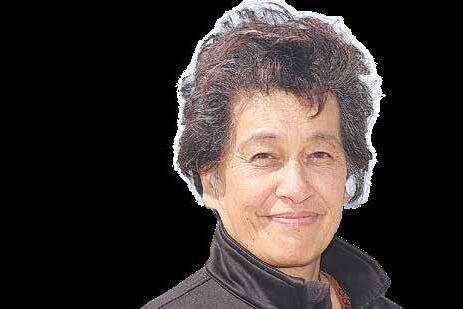


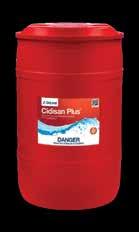
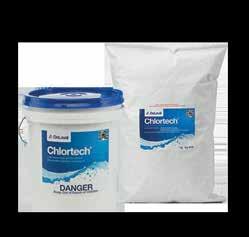

AHUWHENUA TROPHY Finalists hold field days Frontine biosecurity ‘untouchable’. PAGE 5 delaval.com Talk to the Upgrade Specialists 0800 222 228 Try our value-range of detergents today. UPGRADE YOUR CLEANING RESULTS? IS I T T I M E TO Cidisan Plus & Chlortech ® ® ANOTHER RECORD PROFIT! “We’re proud of this result but we know we still have plenty of room for improvement.” – Richard Wyeth, Westland Milk PAGE 3 ENVIRONMENT LEADERS’ FORUM Inspiring progress Page 15
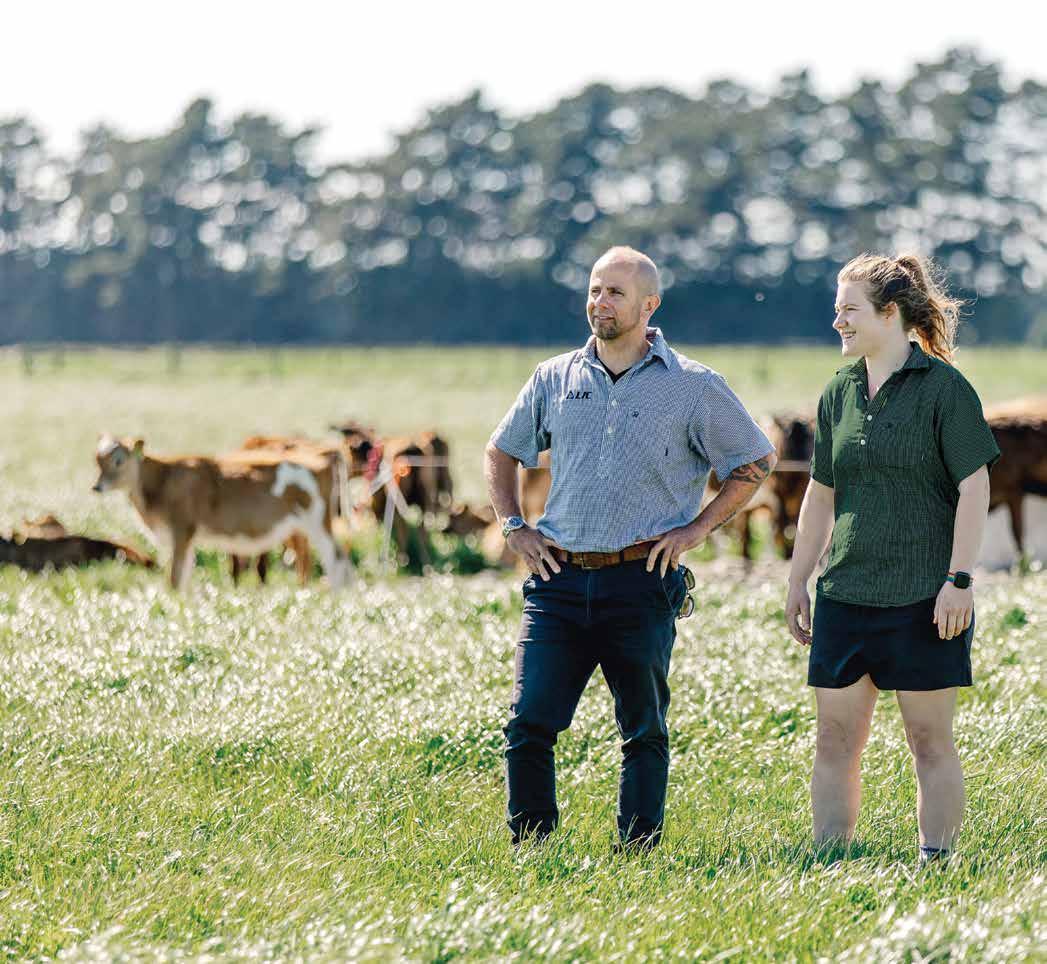
Continue breeding your best with sexed semen
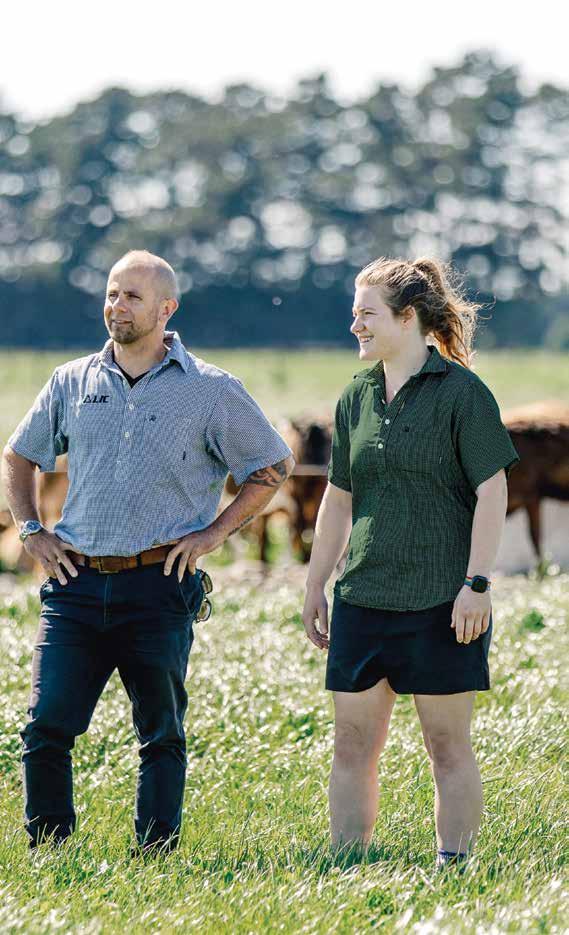
You’re looking forward to the end of the season; getting the dry off done and you’re starting to think ahead.
Now’s the time to start making some good calls with your mating plan for next season.
Choosing female sexed semen can help you breed the best cows, faster. By generating heifer replacements from your best performers, you can maximise cow efficiency which also helps reduce your emissions intensity. And selecting fresh over frozen is best – with Premier Sires® sexed semen teams delivering near normal non return rates.
So, before the cows dry off, put your best foot forward for next season and lock in your sexed semen order.
Talk to your Agri Manager today about sexed semen or visit lic.co.nz/sexedsemen
There's always room for improvement
KINGST_2329_DN_A
Health Genetics Herd Testing MINDA® GeneMark®
Animal
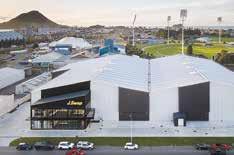
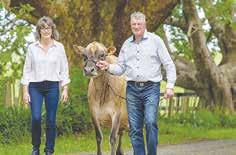
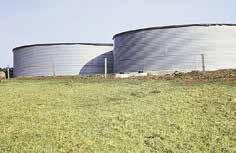
Another record result for Westland Milk!
NOT ALL milk processors in New Zealand are struggling; just look at Westland Milk Products on the West Coast.
The company, owned since 2019 by Chinese dairy giant Yili, posted a second consecutive year of revenues topping $1 billion. Net profit in 2023 reached a record $56 million, topping 2022’s record of $39m.
At a time when another South Island milk processor, Synlait Milk, is said to be at risk of collapse, Westland Milk is forging ahead with the right product mix and support from Yili.
Chief executive Richard Wyeth says in the dairy sector there’s a very fine line between making good decisions and losing money.
“A strong balance sheet, not too much debt and a very good product mix has helped us,” he says.
Westland has had its fair share of problems: the company lost money between 2019 and 2021, recording a $120m rebound in 2022.
Wyeth says to follow up the 2022 performance with another solid performance last year is great, especially with softer commodity prices.
He says the company would maintain its push towards longterm profitability by continuing to divert more milksolids into highervalue products in 2024. Apart from processing milk from its 400 farmer suppliers, Westland also bought milk and cream last year from sister
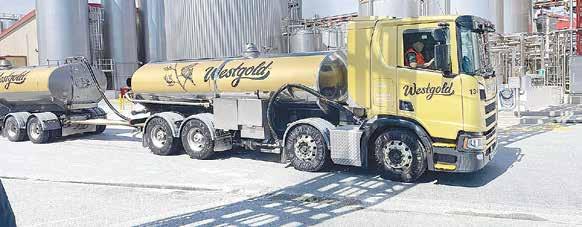
MILK PRICE CERTAINTY
WESTLAND MILK has reaffirmed its commitment to pay farmer suppliers 10c above Fonterra farm gate milk price for the following two seasons.
Chief executive Richard Wyeth says the announcement will give certainty to their 400 farmer suppliers.
“There was some conjecture about payment and we’ve put that to bed,” he told Dairy News
Westland has been paying 10c above Fonterra’s farm gate milk price for the past few seasons. The deal
company Oceania Dairy and other processors.
Unlike Synlait, Westland is not into infant formula, a strategic decision taken when Wyeth took over as chief executive in 2021.
“In the infant formula sector, competition was significantly up and demand was down, so we decided to move away from producing infant formula,” he says.
Wyeth notes that the heydays enjoyed by infant formula eight to ten years ago are long gone.
Westland’s strategy comprises of
will now extend until 2025-26 season.
Another milk processor, Synlait, faces the risk of farmer suppliers switching their supply to other processors like Westland and Fonterra.
Wyeth says they aren’t actively advertising for suppliers.
“But if there are new suppliers interested in supplying Westland, our milk supply team will be happy to talk to them.”
a two product mix: On the fat side, grass-fed butter and UHT cream for the food service sector are the main products and account for bulk of the company’s revenues. On the protein side, milk protein concentrates, whey protein concentrates and caseins are its main offerings. Westland’s butter is a becoming a global success story. A $40 million investment in a new butter plant at Hokitika in 2022 had allowed Westland to expand strongly in the US market. Westgold butter is now stocked in more than 3000 grocery
retail outlets in the US, including Walmart stores. Westland also produces Kirkland Signature New Zealand Grass-Fed Butter for Costco.
Costco reported in their 2022/23 financial results that Kirkland butter sales increased more than 160% year on year and continue to show strong growth.
The Westland-produced butter is now stocked in almost every Costco store in the US, as well as Costco global stores, including Korea, Taiwan and New Zealand, with more international regions in the pipeline.

DAIRY NEWS APRIL 16, 2024 NEWS // 3
Productivity and red tape. PG.06
NEWS 3-10 AGRIBUSINESS 11 OPINION 12-13 MANAGEMENT 14-15 ANIMAL HEALTH 16-17 MACHINERY & PRODUCTS 18-19
Easy to install slurry tanks. PG.19 Connecting through cows. PG.16
SUDESH KISSUN sudeshk@ruralnews.co.nz
Westland Milk’s Westgold butter is a global success story.
Migrant farmer ‘lets the side down’
AN APALLING case of migrant worker exploitation on a Southland farm isn’t acceptable, says Federated Farmers dairy chair Richard McIntyre.
He says the actions of Indonesian-born farmer Reza Abdul-Jabbar have no place in the dairy sector.
McIntyre says they are pleased that the Employment Relations Authority (ERA) has imposed a significant fine.
“The agriculture sector is reliant on migrant labour, particularly in remote areas, so it is important that they are treated well and the rules are followed,” he told Dairy News
“Farmers will be incredibly frustrated that this employer has let the side down in such a significant way. Farmers are typically very good employers of migrant labour.”
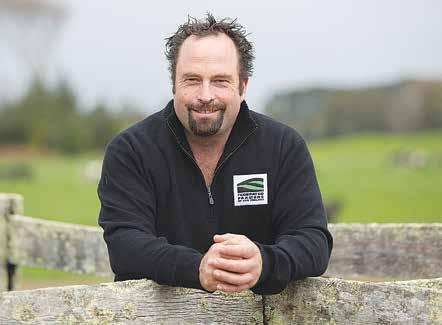
Abdul-Jabbar and his company Rural Practice Ltd (RPL) were ordered to pay $215,000 over the exploitation of three migrant workers from Indonesia by ERA member Alastair Dumbleton.
He ruled Abdul-Jabbar disregarded NZ law governing employment and took advantage of three men who were from his own country.
The three workers came from Indonesia to work for the company on its Invercargill dairy farm, and were subject to numerous employment breaches during their time working between 2017 and 2022. They included not paying their workers minimum wage, nor their holidays, manipulating payslips, unlawful


wage deductions and not keeping accurate wage records.
In December 2020, one of the workers raised the alarm through the Ministry of Business, Innovation and Employment (MBIE) contact line to complain about his pay, days off and that the employer refused to return his passport and identification.
Abdul-Jabbar was an imam at a mosque in Invercargill, and the religious advisor to at least one of the three workers.
In his ruling Dumbleton noted that there may be several underlying rea-
sons for the failure of an employer such as RPL to comply with statutory and contractual employment law obligations, or for persons such as Reza Abdul-Jabbar becoming involved in a failure of that kind.
“Lack of dairy farming skill or knowledge or experience, may be an explanation. So too might be financial pressure or concern, personal problems including health issues of different kinds, ignorance of the law, or just plain neglect or inadvertence.
“The authority concludes that none of those
reasons provides an explanation. The authority concludes that the explanation is an attitude held by Mr Abdul-Jabbar of disrespect for employment and immigration statutory rules and regulations – ‘officialdom and bureaucracy’ – and also an attitude of indifference to the sanctity of contract.
“In short, as a director and owner of the employer RPL, when it suited him, Mr AbdulJabbar knowingly disregarded the law governing employment.
“The respondents acted as if they knew best what was right for workers from Indonesia, not INZ or the labour inspector or parliament which made the law.”
MBIE head of compliance and enforcement Simon Humphries says it was unforgivable that business owners would knowingly and deliberately exploit vulnerable workers they brought to New Zealand.
“These workers came to this country in search of a better life, but they were taken advantage of by those they trusted,” Humphries said.
the key to
JESSICA MARSHALL jessica@ruralnews.co.nz
A new report from Rabobank suggests exactly that.
In its Foodservice Update for the first quarter of 2024, the bank states AI is becoming more accessible to foodservice operators of all shapes and sizes, with software-as-a-service (SaaS) providers and an increased availability of data are facilitating this shift.
“Data is the essential raw material for AI, but until recently, the foodservice industry lagged behind other sectors in terms of digitalization,” the report reads.
Yet, since 2020, consumers have shifted towards digital channels for both information and transactions.
“Companies that have digitalized their contact with consumers through kiosks and loyalty apps… now possess proprietary data, as do delivery platforms,” it states.
Report co-author, US-based RaboResearch senior analyst Thomas Bailey says current AI applications in foodservice are primarily focused on increasing efficiency, reducing staff workload, optimising marketing strategies, and improving customer experience.
“Customer interactions are also being transformed through AI, with highly performing chatbots and telephone assistance software improving the customer experience and operational efficiency,” Bailey says.
“AI software can be used to improve text and images, personalise customer interaction, understand brand perception, and implement more focused pricing strategies,” he says.
However, Bailey is quick to point out that AI is a “work in progress” and “far from perfect”.
“The adoption of AI also carries potential risks, including customer alienation and technologyrelated issues,” he says.
The report points out that it is a necessity to define the purpose of incorporating AI and its subsequent actions.
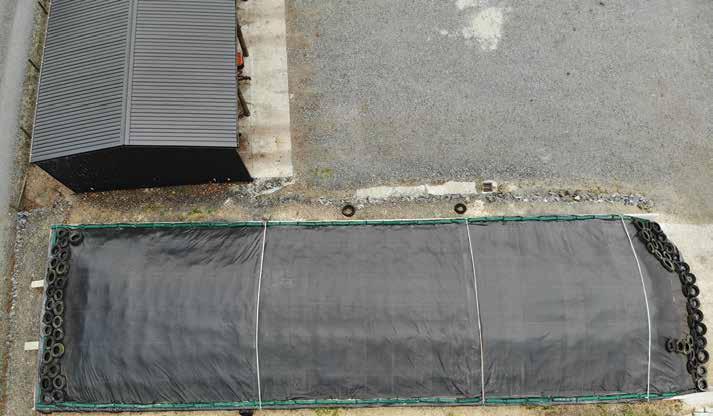




DAIRY NEWS APRIL 16, 2024 4 // NEWS REUSABLE SILAGE COVERS • MINIMAL SPOILAGE (0.27%) HIGHLY RESISTANT TO DAMAGE AND TEARING • NO TYRES REQUIRED - ONLY GRAVEL BALLAST BAGS QUICK INSTALLATION • REUSABLE: GUARANTEED FOR TEN YEARS, GEOSMART GREATLY REDUCES THE PRODUCTION OF PLASTIC WASTE ENVIRONMENTALLY FRIENDLY SUPERIOR AIRTIGHTNESS EASY TO REPAIR Contact us for more information 0800 109 093 or 021 280 7266 Email: vaughan@cosio.co.nz • www.cosio.co.nz EFFLUENT PONDS which Firestone • Nationwide Firestone trained and accredited installation contractors. • Future proof - dependable performance, 50 year life expectancy even when exposed, 20 year Firestone material warranty • Over 120 million square meters installed worldwide. 30 years in the NZ lining business. contractor 093 Authorised importer and distributor of Firestone Building Products vaughan@cosio.co.nz NOW READ IT ONLINE READING THE PAPER ONLINE HAS NEVER BEEN EASIER ■ BREAKING NEWS ■ MANAGEMENT STORIES ■ MACHINERY REVIEWS ■ MARKETS & TRENDS ■ COMPETITIONS ■ AND MUCH MORE... All the latest stories and more at www.dairynews.co.nz
Foodservice?
SMALLER foodservice operators take
of the benefits of artificial intelligence (AI)?
AI
COULD
advantage
SUDESH KISSUN sudeshk@ruralnews.co.nz
Feds dairy chair Richard McIntyre says migrant workers must be treated well.
Frontline biosecurity ‘untouchable’
AWARD WINNERS
TER Andrew Hoggard has reiterated that ‘frontline’ biosecurity services within Ministry for Primary Industries (MPI) will not be cut under the Government’s plan to reduce the public service. He gave this assurance to Dairy News at the annual biosecurity awards which he hosted at Parliament, attended by more than 200 people. The awards are designed to recognise and celebrate inspiring and diverse biosecurity champions who are making significant contributions to biosecurity in New Zealand. These include schools, community groups, companies, science institutes and local authorities.
AMONG THE winners at the awards was the company VeritAg which played a pivotal role at the height of the Mycoplasma bovis outbreak.
This small company, represented at the awards by two of its directors, Richard Campbell and Cynthia Northcote was responsible for mobilising veterinary practices around the country to take samples from potentially infected farms.
They also worked closely with SVS labs to speed up the testing of the samples. At the time MPI didn’t have the capacity in-house to do this work and asked VeritAg for help.
The other major award presented at the evening was the Ministers own Biosecurity Award. This went to long serving SCION scientist Dr Brian Richardson, recognising his outstanding contributions to NZ biosecurity over many years. Richardson has been involved in a number of eradication programmes including wilding pines and invasive insects such as the painted apple moth, white-spotted tussock moth, and southern saltmarsh mosquito.
Hoggard says biosecurity has always been rated by governments and farmers as one of the most important contributors to the preservation of NZ’s primary sector. He says it’s vital for the country’s prosperity and protects our $57.4 billion food and fibre sector as well as our unique flora and fauna.
“The biosecurity system run by MPI is our first line of defence against any incursions of a disease.
“I have been looking at the MPI budget and all the frontline activities
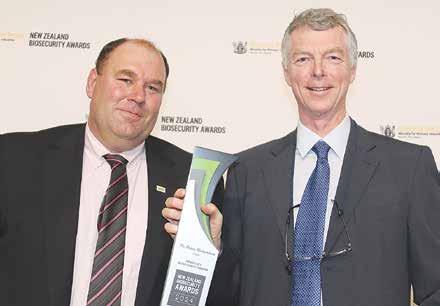
and they are staying the same. It’s around some of the backroom functions that MPI were looking to trim a bit. Given the constrained environment we are working in there is a need to look and see if things can be done smarter and faster and get better bangs for our bucks. But again, frontline services will be untouched,” he says.
Referring to the
awards, Hoggard says it’s nice to recognise those people who are working at the grass roots level in biosecurity. He says it’s important to recognise community groups and schools and other individuals and organisations who are playing a part in protecting the unique environment in which we live.
“If you look locally here in Wellington, all the
predator free work that is going on; in other parts of the country it could be Caulerpa removal or getting boaties to clean their boats. The Government can out up signs and the like, but community involvement is critical,” he says.
As for the farming sectors’ response to biosecurity, Hoggard says most people are acting responsibly in terms of
“I have been looking at the MPI budget and all the frontline activities and they are staying the same.”
NAIT, but he says there is always room for improvement. He says the aim is to encourage better behaviour at a farm level and look at new ways for farmers to improve their biosecurity and build on the work that was done during the M. bovis outbreak.
“I would be keen to see if we could do the same in regards to BVD and Johne’s and utilising the NAIT systems that are already in place,” he says.
PROFIT FOCUS FALLS OFF THE RADAR
THE DAIRY industry has lost its mojo in the last six or seven years, according to a leading dairy farmer, Trevor Hamilton.
He says it appears that many people in the industry today are more interested in having a lifestyle rather than having a strong focus on profitability.
As a result, the corporate farmer believes the industry has gone backwards instead of forwards. He says in his case he looks at his farming operation, which is based in both the North and South Islands, as strictly a busi-
ness designed to make a profit.
“Dairy farming isn’t a hobby as far as I am concerned,” he says.
Hamilton says there appears to be a lot more focus nowadays on alternative forms of dairy farming such as once-a-day or alternate day milking. He cites regenerative agricultural and organic farming as systems which don’t make dairy farming more profitable.
He says dairy farming is about growing as much pasture as you can and utilising that pasture. He says the evidence in Dairybase states, the more
grass you grow, the better you utilise that feed, and add cheaper forms of supplement where necessary, the more profit results.
“But we seem to have been dodging away from that to the extent that profitability is not a high priority in the industry and so the result of that is we are seeing the milk pool in NZ on a gradual decline,” he says.
Hamilton says despite being better educated, some people in the industry don’t seem to embrace the proposition that the only way to grow a business is to be more profitable. He

says, if they want help from the banks, they need to meet the expectations of the banks, who ask ‘are you profitable now and what is your strategy to be profitable in the future?’
“The banks think about one thing only – your financials,” he says.
Hamilton says a factor which is creeping into the dairy industry is what he calls ‘add-ons’ – a good example being cow collars. He says it’s interesting that one company has reduced the price of these by 37% recently and he questions whether people buying them are doing so to

improve their profitability or for lifestyle reasons.
In his opinion it is quite sad that the industry now needs a payout of more than $8/kgMS to make money. He says a lot of farmers won’t make a profit this year on $8/kgMS and it would be a brave person who thinks the payout will be better next year.
“The industry is marginal and it’s the margin over a milksolid that determines profitability – just like any other business – and not all the addons are profitable,” he says.
– Peter Burke


DAIRY NEWS APRIL 16, 2024 NEWS // 5 *Finance offer only available at participating Polaris Dealers and on selected models as stated and is not valid with any other promotions. Finance is provided by Polaris Finance, a program operated by De Lage Landen Limited Company No 1355515 and available for business purposes only on a Hire Purchase Agreement. Credit approval, fees, terms and conditions apply. Finance is based on a 24 month term, for full promotion details and structure please contact your Polaris Sales Representative. Offer ends 30/4/24. 4.99 % P.A. FINANCE * ON SELECTED MY23 RANGER AND SPORTSMAN NO DEPOSIT | 24 MONTHS
BIOSECURITY MINIS-
PETER BURKE peterb@ruralnews.co.nz
Scion scientist Dr Brian Richardson receives his award from Biosecurity Minister Andrew Hoggard.
Protect productivity from red tape
TRIES shouldn’t be strangled in red tape, they need to be able to operate and grow, using technology to meet rising expectations for environmental standards, according to Dudley Clemens – environmental manager at J Swap Ltd.
The Matamata-based company has put this into action, investing in a cutting edge, purposebuilt stockfood storage facility at Mount Maunganui, next to the Port of Tauranga, which more than meets emissions targets. In 2018 the regional council changed the airshed rules, including for the port, and the area was declared “polluted”. For particulates, logs were deemed as the number one contributor and bulk freight was number two, although collectively ‘Industrial’ contributes just 18% of the local pollution, with Marine, Transport, and Traffic (Tauranga’s population is now about 140,000) contributing most of the balance.
At ‘the Mount’, the long-established port and adjacent industrial strip have acquired new neighbours over the years as the residential area has expanded. Perhaps not surprisingly, it is industry that is now expected to change.
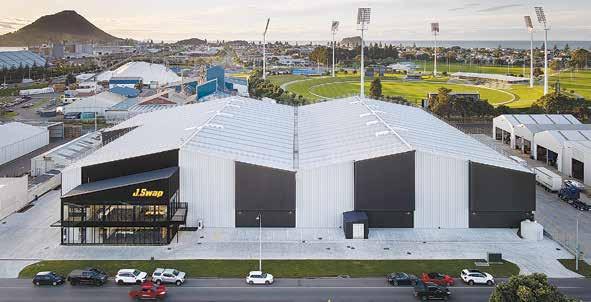
‘NOT THIS YEAR’
J SWAP director Stephen Swap says Swap Stockfoods won’t be at National Fieldays this year, and believes the event would deliver better value if it was held every other year, not annually.
Most major ag-shows around the world run in alternate years. The current slow economy, particular the rural economy, has put the focus on value – something Swap says an annual event at Mystery Creek no longer delivers.
“We still like the Fieldays and will go back, but it’s not necessary to have it every year. The costs are too high and the returns too low. Every other year would be better.”
“Some groups want us to move, but the solution to pollution is not shutting us all down, the solution is enabling us all to apply new technology and methods to fix problems. Some tolerance is needed.
“We’re trying to be leaders in this space so we can meet our obligations while still being able to grow.
“The new rules are very strict, and represent quite a step up for everyone involved. So, the challenge for industry in the area was to modify operations to reduce emissions, in line with the revised regulations.”
Swap Stockfoods have two bulk storage warehouses next to the port: the old warehouse, built in 2013 years before the air quality rules changed, has ‘grandfather rights’
Clemens says J Swap is doing their bit. As with farming though, the tighter restrictions must be applied with enough common sense to allow the productive sectors to operate and to grow.

that allow it to operate under the old rules for 3 years, after which the company will need to apply for new consents for the building.
The huge new warehouse on Hull Road, Mount Maunganui, is purpose-built with new emissions technology that not only meets but exceeds the new rules and emissions standards.
Clemens says it is considered in the industry as
one of the best of its kind in the country.
A lot of thought and expertise went into the planning. For example, the transition zone –where trucks enter and exit the building – is set further back from the road; the building is completely sealed; the pneumatically-operated door for heavy trucks is open for 30 seconds per pass, limiting the time the building is open; a ‘sweep
zone’ where the trucks first come inside is sectioned off from the storage area and kept clean, to reduce the potential for dust build up to exit through the door.
“The ducting and extraction system is also cutting edge,” says Clemens.
“We’ve created a zone of negative pressure to draw air (and dust) away from the door area. We can shut off extraction in
It seems some other businesses are thinking along similar lines, with a few regular Fieldays exhibitors noticeably absent this year, although the overall exhibitor list remains solid. The disruption of the Covid years broke the spell for many exhibitors, who realised the sky didn’t fall when they were unable to go to Fieldays.
On the issue of RMA and compliance hurdles facing industry, Swap says the cost and time delays are holding the country back. He says changes are urgently needed and the new Government has at least signalled that changes are coming.
areas within the building – using pneumatic gates on the ducting – depending on which areas we’re loading or unloading product.
“It is always on, and we have full control: zone control and speed control (extraction fan speed).
We have also changed procedures inside the building to limit how much dust is created, even before extraction is needed.”
Following the ducting system through the wall, we come to a huge unit outside the building –the ‘bag house’, which is effectively a big vacuum cleaner, filtering out particulates using self-cleaning filters, cleaned by air ‘pulsing’, so the air that
leaves the sealed system via the stack is effectively cleaned.
It is basically the same system used for fertiliser and coal applications, but this was the first time engineers had applied the technology to a stockfood warehouse.
Because it was a first, some experimentation was required to fine-tune the system. The emissions targets Swaps set themselves were set in consultation with experts in the field, and are aligned with the National Environmental Standards for Air Quality (NESAQ).
“We’ve over-engineered this to ensure we’re future proofed,” says Clemens.

DAIRY NEWS APRIL 16, 2024 6 // NEWS
PRODUCTIVE INDUS-
FRICKER
ADAM
J Swap says its new purpose-built warehouse is designed from the ground up specifically to meet more stringent air quality standards.
Highly palatable n Population control in 7 days n Readily metabolised and not persistent in the environment Find out more at pest-control.basf.co.nz
The new warehouse is sealed and features an advanced air ducting and filtering system.
n
Cheesemakers may need new cheese names under EU FTA
1950s by a farmer cooperative.
THE OWNER of an award-winning cheese producer says the Government’s free trade agreement (FTA) with the European Union (EU) has proven disappointing for the sector.
Daniel Shields, owner of Barry’s Bay Dairy Company, says that at first glance the FTA looks okay for the company, but the wider issue will be how the market handles the issues of geographical indications (GIs).
The company has a long history, beginning in 1895. Shields says the company’s current factory was built in the
“The cooperative closed it down in the dairy industry restructuring in the early eighties and the then factory manager – Don Walker –reopened the business.”
Originally, the factory made a single type of cheddar cheese for the Dairy Bard, but then proceeded to experiment with other types of cheeses.
“With help from other early premium cheese pioneers – notably Albert Alferink from Mercer Cheese – the factory branched into European wheel cheeses such as Gouda and Maasdam and also the semi-soft Havarti,” Shields says.
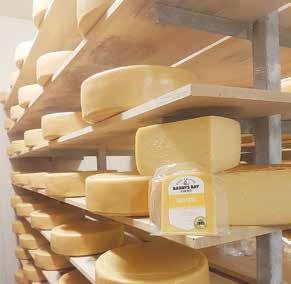
The business was then sold to Mike and Catherine Carey who took the business into grocery stores, and then, in 2017, Daniel and wife Amy purchased the company.
Barrys Bay won eight gold awards at the recent at the New Zea-
land Champion of Cheese Awards last month, bringing home awards for its Aged Cheddar, Chilli Cheddar, Cumin Spice Cheddar, Peppered Havarti, Smoked Rinded Cheddar, Parmesan, Gruyere, and Maasdam.
Shields says he’s delighted to pick up eight gold awards at the competition this year.
“What’s really pleasing is that we did this across all of the different cheese types we make – cheddars, European wheel cheeses and semi-soft havartis,” he told Dairy News.
“It’s the payoff for some hard work we’ve done in production quality and also cheese aging – known as affinage.”
“With great cheese coming out of the vat, we’re taking the time to let that cheese mature and develop really delicious flavours,” he adds.
At the same time, the geographical indications included in the EU FTA are set to impact the
company.
Shields says that while both Gruyere and Parmesan – two cheeses Barrys Bay won awards for this year – have grandparenting clauses, meaning if the company can show five years of prior use the names can continue to be used, no new manufacturers can use them.
“It is going to be very confusing for consumers to know that my Gruyere is equivalent to someone else’s ‘Fondue style cheese’,” Shields says.
“Because of the ‘evocation’ and ‘passing off’ rules the people who can’t use the names can’t just use terms like ‘Swiss style’ or make up a name like ‘Gruyeah’.”
He says GIs became a bargaining chip to gain
better access for other industry sectors to the European market.
“Conversely, in New Zealand the FTA essentially gives European producers and their agents in this country a monopoly on the Gruyere, Parmesan, Feta and Gorgonzola market segments,” he explains.
“The cost and effort now falls on the New Zealand dairy industry to come up with a new naming convention for these products and educate the domestic market on the new names.
“We are hoping for some government support in this transition but [are] wary of the general belt-tightening in the public service at the moment.”
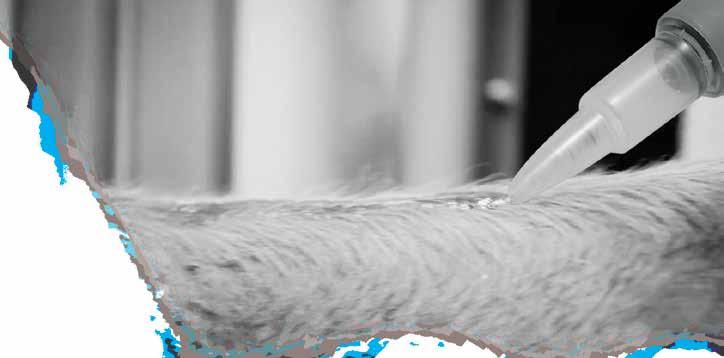

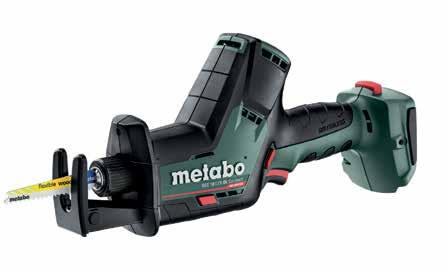

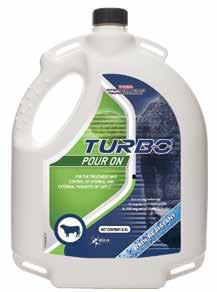
DAIRY NEWS APRIL 16, 2024 NEWS // 7
JESSICA MARSHALL jessica@ruralnews.co.nz
When you choose TURBO* Pour On, you’re not only getting the ultimate solution for parasite control you’re also receiving a cutting-edge tool to enhance your work productivity. The Metabo SSE 18 LTX BL Compact Cordless Sabre Saw is a valuable tool for farm operations, offering convenience, versatility, efficiency, precision, and safety. CUT ABOVE THE REST… ALLEVA.CO.NZ | PROUDLY NZ OWNED TURBO® is registered trademark of Alleva Animal Health Ltd. TURBO Pour On (A011722) is registered pursuant to the ACVM Act 1997. See www.foodsafety.govt.nz for registration conditions. *Promotional items received may differ from advertised images and available while stocks last. Offer applies to TURBO Pour On 7.5L promotion packs only. OUD NZ O TURBO® Pour On is formulated with advanced ingredients designed to effectively control a wide range of parasites. PURCHASE 7.5Ls OF TURBO POUR ON AND RECEIVE A METABO SSE 18 LTX BL COMPACT CORDLESS SABRE SAW*. AAH-TUPO-2024-001
Barrys Bay award-winning Gruyere cheese.
Ahuwhenua Trophy finalists
In a few weeks the winner of the prestigious Ahuwhenua Trophy for the top Māori dairy farm will be revealed at a gala dinner in Hamilton. In the past couple of weeks, the two finalists in this year’s competition have been holding on-farm field days to showcase why they are finalists.
Peter Burke has attended both field days.
BOTH EVENTS have been well attended with more than 300 people coming to WMI and about 250 to Whakatohea.
The finalists are Wairarapa Moana Incorporation (WMI), based at Mangakino in the Central North Island, and the Whakatohea Māori Trust Board based near Opotiki.
At the farms visitors
whenua Trophy was carried onto the venue for the powhiri and later there were presentations by trustees and staff.
In the case of WMI the welcome and presentations were held in a marquee because there was no WMI marae. But with Whakatohea, the welcome and presentations were held at the Terere
tory, strategy and key financial data of both finalists, and then guests had the opportunity to go to selected sites on the farms to hear more details about the respective properties from farm staff and their advisors. There was also an opportunity for visitors to ask questions and see the stock and get a better
The two are quite different: The farm entered by WMI, Farm 4, has a milking platform of 300 hectares, milking 980 cows and producing 416,000 kgMS. But it is one of 12 dairy units owned by WMI across a 4300ha platform, plus three dairy support units comprising 1900ha.
Geoff
Kevin
Bruce
WMI aims to produce from its 12,000 cow herd and is the largest supplier


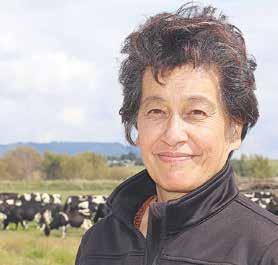
FANTASTIC TURNOUT
THE FIELD days at both Wairarapa Moana Incorporation and Whakatohea Māori Trust Board, along with the judging process, provided both entities with a great independent insight into their respective farms.
The CEO of Whakatōhea, Dickie Farrar, says their field day was fantastic with people coming from afar to learn about the farm and the history of Whakatōhea. She says she found it inspirational seeing all the hard work of her staff coming together. It helped to understand the tremendous effort that goes into the running of the competition, including the judging process.
Meanwhile the chair of Wairarapa Moana Incorporation, Kingi Smiler, described the recent field day at their Number 4 dairy as a fabulous day with a fantastic turnout. He says it was a major undertaking to organise the field day and says they had a big team of staff helping behind the scenes for the last two months.
Finally, Nukuhia Hadfield, the chair of the Ahuwhenua Trophy Management Committee, praised the efforts of both finalists for organising their respective field days. She says both are worthy contenders and she is looking forward to the announcement of the winner at the awards dinner, being held in Hamilton on 17th May 2024.
to milk processor Miraka, of which it is a cornerstone shareholder.
By contrast Whakatōhea Māori Trust Board’s dairy farm, Te Riu o Kānapanapa, is a collective of five dairy farms located 4km south of Ōpōtiki. The dairy platform is 218ha effective, made up of 175.7ha of corpus whenua, plus an additional 29ha of freehold land and a 13.3ha lease block. The farm winters 748 cows and milks 690 to peak with a production target of 300,000 kgMS. They also rear stock on a 346ha support block near Matawai in the Gisborne catchment.
Mark Johnson is Whakatohea’s farm advisor and he and farm manager Josh Collier were centre stage during the actual presentations out on the farm. According to Mark, times have been tough for Whakatohea over the past few years with almost incessant rain, which ponded in paddocks, damaging pasture and making it hard for staff and stock.
“In the end the cows gave up – they just didn’t
DAIRY NEWS APRIL 16, 2024 8 // NEWS
Whakatohea Maori Trust chief executive Dickie Farrar.
323 1277
Ingram 027
440 272
Taylor 027
243 005
Kinlock 027
ENQUIRIES:
showcase farms
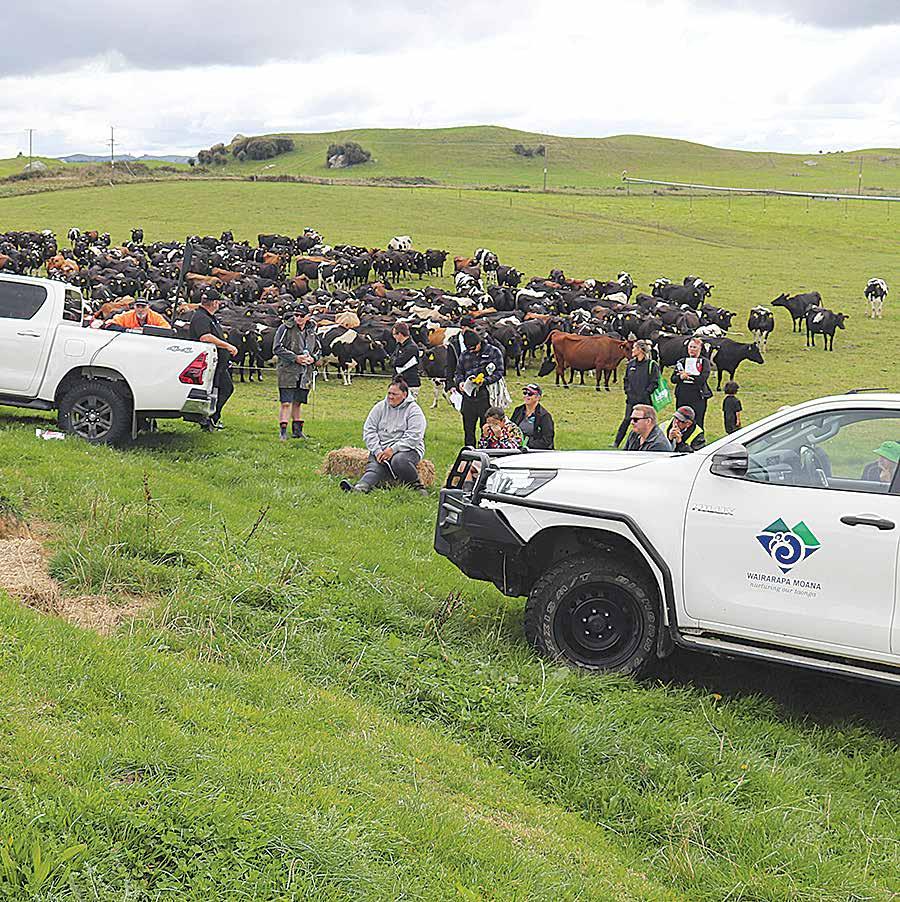
want to eat the grass because it was so full of water and lacked nutrition. The cows were miserable and the people were miserable,” he says.
Unfortunately, the problems of last season’s wet weather spilled over to the current production year, causing an outbreak of staph aureus, which created mastitis. On top of that, there was a salmonella outbreak and some of the calves ended up with rotavirus. There were also problems with supplements which were down by about half.
The end result was a 6% drop in production to around 259,000 kgMS – well down from the normal target of 300,000 kgMS.
But Johnson says things are picking up and, like most farms in the district, grass growth is phenomenal. So also are yields from maize, hitting close to 25 tonnes per hectare over the 19ha planted.
“The critical thing now is managing the grass and to that end our stocking rate of 3.5 per ha is high by some standards, but not ours as we need
the additional animals to manage the grass growth in summer,” he says.
Johnson is positive about the farm, saying they have invested heavily in new infrastructure such as a new cow shed, new silage bunkers and a state-of-the-art effluent system.
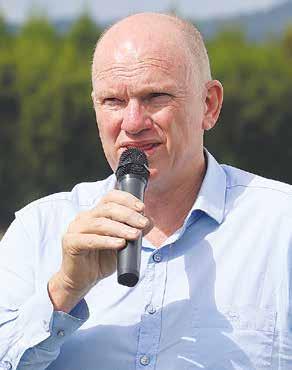
FARM LEVEL CONTACT
AT WMI, chairman Kingi Smiler says he’s personally very active in overseeing the operation, right down to the last detail on the farm, with the staff.
He sees his job as getting to know and understand what needs to happen at a farm level. Smiler says WMI have a comprehensive database and staff report to the governing body on what is happening, giving them confidence that the strategy is being implemented.
“We of course have good staff whose attention to detail is excellent and they have been able to execute this every day of the week and get it right most of the time across all our farms, which is not easy,” he says.
One of the farm advisors at WMI is Dr Gavin Sheath, who’s had a stellar career at AgResearch as a farm systems scientist, says a key to the success of the
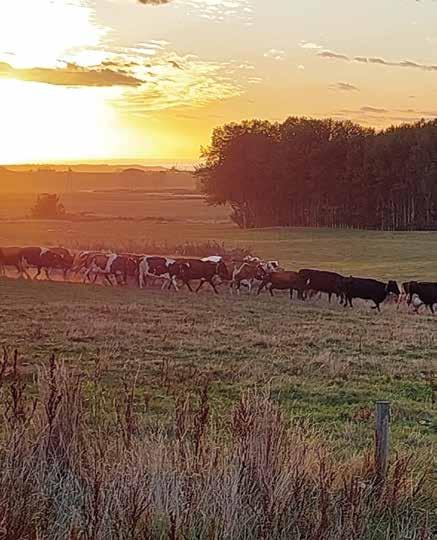

number 4 Farm is the good systems that are in place and the support for these at a management level.
“So people know exactly what’s wanted from them,” he says.
Sheath says his role has been to reposition Farm 4 into a highly efficient property which has a low impact on the environment. For example, they worked out that winter cropping was using too much nitrogen, so they eliminated winter cropping and ended up halving their use of nitrogen.
“We have put in a pretty precise effluent management system and we did drop stocking rates just a little bit.
“Our aim is to reduce the amount of nitrogen leaking from the farm, but at the same time making certain that we are highly productive and profitable,” he says.
“SenseHub® Dairy collars provide valuable risk protection for our business by removing the reliance on a single individual for cow selection during AI. This really reduces the workload with mating, and frees up time and resources for other things.
Our advice to anyone considering starting their SenseHub journey is: don’t hesitate—dive right in! It truly has the potential to revolutionise your life and your farm operations.”
DAIRY NEWS APRIL 16, 2024 NEWS // 9
Mark Johnson, Whakatohea’s farm advisor, speaking at the field day.
Wairarapa Moana Incorporation (WMI) hosted 300 people on its farm in Mangakino.
Contact us today about getting collars on your herd www.sensehub.co.nz Copyright © 2024 Merck & Co., Inc., Rahway, NJ, USA and its affiliates. All rights reserved. NZ-NON-240300041. ® Registered trademarks.
reduced.” – Tracy and Johnny
411 cows This product is not intended to diagnose, treat, cure, or prevent any disease in animals. For the diagnosis, treatment, cure, or prevention of disease in animals, you should consult your veterinarian. The accuracy of the data collected and presented through this product is not intended to match that of medical devices or scientific measurement devices.
“Our workload has significantly
O’Sullivan, Otago,
Co-op eyes Japan’s growing dairy ingredients market
JAPANESE CONSUM-
ERS pay a premium for food that contains ingredients that support health.
Fonterra says they can pay up to 50% more for foods with ‘functional’ claims.
“Functional ingredients do well in Japan and Fonterra has a clear competitive advantage in the space. It’s our sonzai-igi – our reason for being,” says Kunimoto-san, Fonterra’s new president for its North Asia business, comprising Japan and Korea.
Demand for Fonterra dairy ingredients is underpinned by Japan’s demand for functional foods, or foods that con-
tain added nutrients that benefit health.
Kunimoto-san says Fonterra’s dairy ingredients have always been part of this trend and the co-op’s whey protein isolate (WPI), whey protein concentrate (WPC) and milk protein concentrate (MPC) are in demand as a result.
“Fonterra’s dairy ingredients have been quietly at the forefront of the revolution, helping to deliver benefits from satiety to longevity for consumers to live happier, healthier lives,” he says.

There’s a reason the world looks to Japan for inspiration in functional foods – foods that offer health benefits beyond basic nutrition. Japan is home to some of the world’s longest living people with 90,500 cen-

nitive decline. Foods with functional claims typically retail at 1.5 times the price of ordinary foods.
Products like yoghurt containing probiotics, vitamins and minerals can be found in any of the country’s convenience stores.
Kunimoto-san says, topping the list is protein, “and it would seem the more protein you can include into a product, the better’’.
But taste remains fundamental for Japanese consumers.
ideal because there’s little or no compromise on taste, appearance, or quality.”
To meet customer requirements, Fonterra actively works with technical experts in market and Fonterra Research and Development Centre (FRDC).
The collaboration extends to having a Fonterra resource at customers’ R&D centres and having customer presence at FRDC to jointly develop the next big idea.
tenarians (people over the age of 100). By 2030, 1 in 3 people there will be over the age of 65.
This drives strong demand for products that support well-being, mobility and combat cog-
“No matter how good a product may be for you, if it doesn’t taste right, it’s probably not going to cut it”.
“Our ingredients are
Examples of product applications include Fonterra’s MPC, WPC, and WPI used high protein beverage and WPC in milk flavour protein powder.
Sure, the Suzuki DR200 might not be the cheapest farm bike out there, but it is New Zealand’s favourite … and little wonder. With its legendary reliability and durability, even at $6,086 +GST Kiwi farmers know it’ll cost a whole lot less at the end of the day. And with no deposit, 0% P.A. interest for 12 months and from $20 per day, it’s really not that spendy.
Talk to your local Suzuki dealer today or visit www.suzuki.co.nz

DAIRY NEWS APRIL 16, 2024 10 // NEWS
HUNDY. NO
0%P.A
FOR 12 MONTHS.
Japan is home to some of the world’s longest living people with 90,500 centenarianspeople over the age of 100. Inset: Kunimoto-san, Fonterra president for its North Asia business.
THE NOT SO SPENDY DR2
DEPOSIT,
INTEREST
T&Cs: This no deposit and 0% p.a. interest rate finance offer is fixed for 12 months and available on new DR200SE purchased between 1/2/24 and 30/4/24 at participating Suzuki dealers. Daily payment is indicative only and is based on regular weekly payments of $143.10, PPSR fee of $10.35, monthly maintenance fee of $2, UDC loan fee of $130, and a dealer origination fee (your dealer can tell you their applicable fee). The loan is provided by UDC Finance Limited. UDC’s lending criteria and standard terms and conditions apply. Offer not available in conjunction with any other promotion, while stock lasts. TRACTA23091_DN
Green light for acquisition
GREAT MATCH
THE MERGER of two of the country’s largest animal nutrition companies won’t lessen competition, the Commerce Commission has ruled.
The ruling allows rural trader Farmlands to acquire SealesWinslow from fertiliser co-operative Ballance on June 1 this year. SealesWinslow will continue to produce its own brand of nutrition products and service its existing customers. It will also increase Farmlands’ feed manufacturing footprint into the North Island which includes NRM and McMillan feeds businesses.
The Commission says that in reaching its decision, it considered the potential impact of the proposed acquisition on competition in regional markets for the bulk supply of supplementary feed for ruminants and, separately, the bagged supply of supplementary feed for ruminants, particularly for calves.
The Commission raised potential concerns with the proposed acquisition because Farmlands and SealesWinslow are the two main suppliers of bulk and bagged pelletised compound feed for ruminants in various regions across New Zealand.
However, after further investigation, division chair Dr Derek Johnston says the Commis-
FARMLANDS CHIEF executive Tanya Houghton says that SealesWinslow is a great match for Farmlands, combining a co-operative heritage, strong feed assets and expertise.
“Bringing our combined assets, expertise and market reach together, offering three leading animal nutrition brands, we’ll increase our ability to create long-term benefits and value for shareholders and customers.
“We’re very excited to be able to welcome the SealesWinslow team into our Farmlands whānau. We’ll be one huge step closer to achieving our goal of being the number-one supplier of animal nutrition to New Zealand farmers.”
Ballance Agri-Nutrients chief executive Kelvin Wickham says the divestment aligns with Ballance’s focus on its core of providing reliable and affordable supply of nutrients for New Zealand farmers and growers.
SealesWinslow was established in 1968. In 2011, Ballance purchased 51% of SealesWinslow and acquired the remaining 49% in 2013.
sion is satisfied that the acquisition is unlikely to substantially lessen competition in any New Zealand market.
“Our investigation indicated that, while the merging parties are both significant suppliers of pelletised compound feed for ruminant animals such as dairy cows and calves, they also compete with suppliers of other types of supplementary feed for ruminants.”
These other feeds include single grains, often referred to as ‘straight’ feed, or feed that is a combination of grains, often referred to as ‘blend’ feed.
“This means that farmers have choices other than just pelletised feed. As a result, we are satisfied that Farmlands is unlikely to be able to

•
•
significantly increase prices, or lower the quality, of its bulk and bagged feed,” says Johnston.
During its public consultation, the Commission received one submission, apart from a joint submission from Ballance and Farmlands supporting the acquisition.
The submission from Neil Burndred, Takanini Feeds, stated that it didn’t make sense for Farmlands to purchase all three mills and the business from Ballance.
He submitted that the purchase of the Morrinsville mill by Farmlands does make some sense, especially regarding the supply of bagged products to Farmlands stores in the North Island.
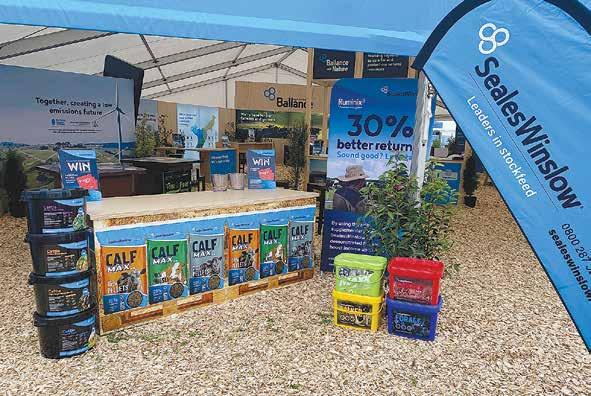
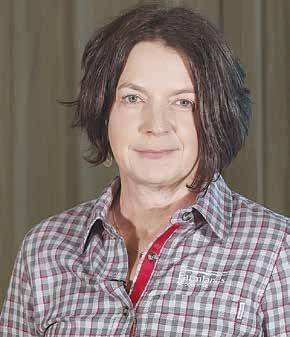
“It will cause some issues for the smaller North Island mills, but I believe they will adapt and survive and continue to slowly grow.
“I personally don’t see the sense in Farmlands purchasing Whanganui, but I guess that is their call.
“I don’t believe that purchase is a good investment for their shareholders. Whanganui is a mill that could be converted to a poultry mill and possibly sold off to
one of the commercial poultry businesses. Perhaps that is part of their overall plan. I do see real issues with the purchase of the Ashburton mill and the monopoly that would give Farmlands in the South Island. History shows that they could consider closing the mill moving all production to their other site,” Burndred wrote.
He supported Ballance’s decision to move out of the stock feed industry.
“Their proposed sale to Farmlands gives them a chance to recover some of their investments and a way of exiting an industry they should never have been involved in. I see Farmlands as another corporate trying to set themselves up as the biggest player in the market.
I personally think that they are making a mistake taking on all the manufacturing assets of Ballance and that this move is not in the best interests of their shareholders. A partial purchase makes more sense.”
Farmlands says the combination of its expertise in bulk and retail feeds and SealesWinslow’s ruminant business will offer the co-operative the chance to leverage different expertise and skills, making it easier to diversify the coop’s offerings across the animal nutrition sector.
It says by maintaining ownership of the feed mills within the New Zealand co-operative, local farmers will retain ownership over this critical aspect of the food production supply chain.


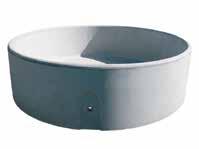


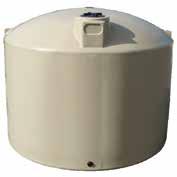
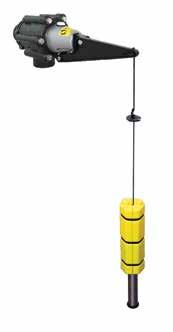
DAIRY NEWS APRIL 16, 2024 AGRIBUSINESS // 11
SUDESH KISSUN sudeshk@ruralnews.co.nz
SealesWinslow was established in 1968.
0800 JOBE VALVES jobevalves.com • Up to 50mm Inlet • Flows up to 600L/min • For Storage Tanks • Easy Access to Valve • Inlets Upto 50mm • Avoids Starting & Stopping of Pump When Tank is Filling • Ideal for Cattle Troughs
High Flow
Side/Bottom Mount
Farmlands chief executive Tanya Houghton.
•
•
Detach to Clean
Compact/Robust

MILKING IT...
‘Not our fault!’
MILKING IT wasn’t too surprised to hear Kiwis’ trust in media has sunk to a new low. A report by the Centre for Journalism Media and Democracy at AUT found that public trust in the media, which in 2020 fell to 53%, has in 2024 plummeted to 33%. So, in five years, general trust in the news has fallen 20%.
The main reason given was left-leaning bias in the media. The reaction of some of the media themselves reveals a stunning lack of self-awareness, which may be part the core problem. NBR journo Dita De Boni had a (conspiracy) theory for the survey result: She said the drop is due solely to a “propaganda campaign” by thinktank The Atlas Network “and [is] nothing to do with the PIJF or anything else”. Yeah, right!
Exploited by one of their own
MILKING IT believes a recent Employment Relations Authority ruling on the exploitation of three migrant workers from Indonesia highlights a trend in New Zealand – migrant workers being mistreated and oppressed by one of their own.
Whether its Indian chefs underpaid and overworked in restaurants owned by mostly New Zealanders of Indian origin or Pacific Island workers hired to work under unfair conditions on orchards by recruiters from their own communities, the perpetrators once arrived here as migrants. In this case, a Kiwi of Indonesian origin underpaid three workers and forged payslips to beat NZ regulations. The farmer and his company were ordered to pay $215,000. Such practices may be rife in their countries but there’s no place for such nonsense in NZ. The NZ dairy industry thrives on being an attractive option for good overseas workers and most (Kiwi) farmers stick to the rules.
Poor investments backfire
SYNLAIT’S FINANCIAL woes won’t be going away anytime soon.
The company is looking at divestments of its Pokeno plant and a canning operation in Auckland to raise capital and reduce debt.
While other dairy companies are making money despite tough economic conditions, where did Synlait go wrong?
For one, they spent millions on investments and then realised that they won’t generate as much profitability per dollar of capital that they invested.
A case in point is the $70 million they ploughed in to fit out Pokeno to manufacture plant-based milk. No other milk processor in NZ thought it fit to make such an investment. Poor investment decisions are coming back to bite Synlait.
Plant-based bubble bursts
TALKING ABOUT plant-based food: “Chicken-free chicken” start-up Sunfed has had its valuation slashed to zero by major investor Blackbird Ventures, and its products are no longer available in supermarkets.
This is leading to questions about the future of Australia’s once-hot alternative meat sector.
The New Zealand plantbased meat company Sunfed has announced it will be shutting down as its inventory runs out and investors leave.
The company, which started in 2015, provided meat alternatives across New Zealand and Australia, using regenerative yellow peas, water and coldpressed extra virgin olive oil as its primary ingredients.
It says “plant-based bubble” had burst and the existing venture capital investors were “no longer interested in supporting the business”. No one should be surprised.
Time for a reset
THE GOVERNMENT’S recent announcement that methane targets will be reviewed is bringing relief to farmers.
The current target of 24-47% cuts by 2050 set by the previous government is unfair. Farmers are looking for a more sensible target from an independent ministerial advisory panel which will be confirmed in the coming months.
Farmers claim methane targets have been a point of contention since they were first introduced because the government of the day chose to set targets that were highly political instead of scientifically robust. They go much further and faster than what is needed and will come at a huge cost to farmers, rural communities, and the New Zealand economy.
The farmer-friendly coalition Government has been clear in the commitment to maintain a split-gas approach to its domestic climate change targets.
The independent review, which will report back to the Government by the end of the year, will provide evidence-based advice on what our domestic 2050 methane target should be, consistent with the principle of no additional warming.
Associate Agriculture Minister Andrew Hoggard, a former Federated Farmers president, wants to ensure that agriculture’s contribution to the 2050 Climate Change targets are fair and appropriate compared to other parts of the economy.
“It’s important that domestic efforts to cut emissions do not drive a drop in our agricultural production. “
The Government says an investment in innovative technology is the key. It expects a science-led approach is taken to assessing the targets, with the Government and sector working towards practical tools and solutions for farmers.
Other parts of the economy are being asked to reach net zero and stop their contribution to further warming by 2050, but farmers are being asked to go much further than that. That isn’t acceptable.


DAIRY NEWS APRIL 16, 2024 EDITORIAL
12 // OPINION RUMINATING
Head Office: Lower Ground Floor, 29 Northcroft St, Takapuna, Auckland 0622 Phone 09-307 0399. Publisher: Brian Hight Ph 09-307 0399 General Manager: Adam Fricker Ph 021-842 226 Editor: Sudesh Kissun Ph 021-963 177 Machinery Editor: Mark Daniel Ph 021-906 723 markd@ruralnews.co.nz Reporters: Peter Burke Ph 021-224 2184 peterb@ruralnews.co.nz Subscriptions: Julie Beech Ph 021-190 3144 Production: Dave Ferguson Ph 027-272 5372 Becky Williams Ph 021-100 4831 Digital Strategist: Jessica Marshall Ph 021 0232 6446 Dairy News is published by Rural News Group Limited. All editorial copy and photographs are subject to copyright and may not be reproduced without prior written permission of the publisher. Opinions or comments expressed within this publication are not necessarily those of the staff, management or directors of Rural News Group Limited. Postal Address: PO Box 331100, Takapuna, Auckland 0740 Published by: Rural News Group Printed by: Inkwise NZ Ltd Contacts: Editorial: sudeshk@ruralnews.co.nz Advertising material: davef@ruralnews.co.nz Rural News on-line: www.ruralnews.co.nz Subscriptions: subsrndn@ruralnews.co.nz AUCKLAND SALES CONTACT: Stephen Pollard Ph 021-963 166 stephenp@ruralnews.co.nz WAIKATO & WELLINGTON SALES CONTACT: Lisa Wise Ph 027-369 9218 lisaw@ruralnews.co.nz SOUTH ISLAND SALES REPRESENTATIVE: Kaye Sutherland Ph 021-221 1994 kayes@ruralnews.co.nz • Printed by Inkwise • Distributed by Reachmedia
Minimising risk of nitrate poisoning
COMING INTO autumn,
maize and summer crops have been harvested/ grazed and farmers are planting their next crop or establishing new permanent pasture.
Many of the common species sown, such as permanent and annual ryegrass, pose the risk of nitrate poisoning in cattle. Unfortunately, over the years I have come across many good farmers who have lost cattle to nitrate poisoning, and witnessed the stress and pressure it causes. Many animals can be affected in a very short period which means that prevention is key, rather than hoping it won’t happen to you.
Nitrate poisoning occurs when ruminant animals consume forages with high nitrate levels. High concentrations of nitrate in the diet can lead to a rumen accumulation of nitrite, which is very toxic.
Nitrite is absorbed into the blood and combines with haemoglobin preventing it from carrying oxygen in the bloodstream. If a ruminant consumes enough of a high nitrate plant, hypoxia (low levels of oxygen in the blood) can develop within an hour, and death can rapidly follow. So, what risk factors increase nitrate concentration in the plant1?
• Nitrogen application – excess nitrogen fertiliser application can result in nitrate accumulation.
• Growth stage – generally nitrate concentration is higher in new growth and decreases with maturity.
• Plant stress – hail, frost or plant disease can damage leaves and reduce photosynthetic activity.
• Sunlight – shaded plants lack sufficient energy to convert nitrate to amino acids. Extended periods of cold (below 12°C) cloudy weather increase nitrate concentration in the plant.
• Drought – nitrate levels build up in the soil and when it rains, plants can take up excessive amounts of nitrate.
Grazing a risky paddock
When the conditions pose a risk for nitrate tox-

icity, it is important to manage grazing animals closely to minimise their risk. Essentially farmers should concentrate more on prevention than treatment, as once an animal begins to show nitrate toxicity symptoms there is likely to be only a short period of time to save the animal. Nitrate poisoning in cattle can be minimised by proper grazing management practices that include:
1. Test don’t guess or hope! Nitrate test kits are cheap and an effective way to understand the risk.
2. Avoid grazing with hungry cattle. Feed low risk feeds such as maize silage, hay or grass silage prior to grazing a high nitrate crop.
3. Avoid grazing to a low residual, as nitrate concentrations are higher in the base of the plant.
4. When risk factors are high, avoid grazing risky paddocks until conditions improve. Ideally graze on sunny afternoons when the temperature is above 15 °C and avoid grazing on frosty or cloudy days.
5. Manage smaller, more frequent grazing of high nitrate feed.
6. Observe stock frequently during grazing potentially risky feed. Set your alarm and check on them an hour after you put them on the break paddock. Look for signs of nitrate toxicity, which include staggering animals (they look like they are drunk), rapid breathing and animals lying down.
7. If you do suspect nitrate poisoning quietly remove livestock to a safe area and contact your veterinarian as soon as possible. Stressing animals which are suffering from nitrate poisoning can make the lack of oxygen worse.
I have witnessed cases where farmers have lost animals even when they have applied one or two of the good management practices above. When grazing risky paddocks, I would recommend that farmers apply all the management practices above to reduce the risk.
If you are unsure, contact your animal health advisor.
• Wade Bell is Genetic Technologies farm systems manager. Contact him at wbell@genetic.co.nz
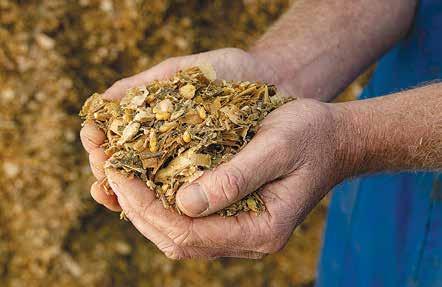
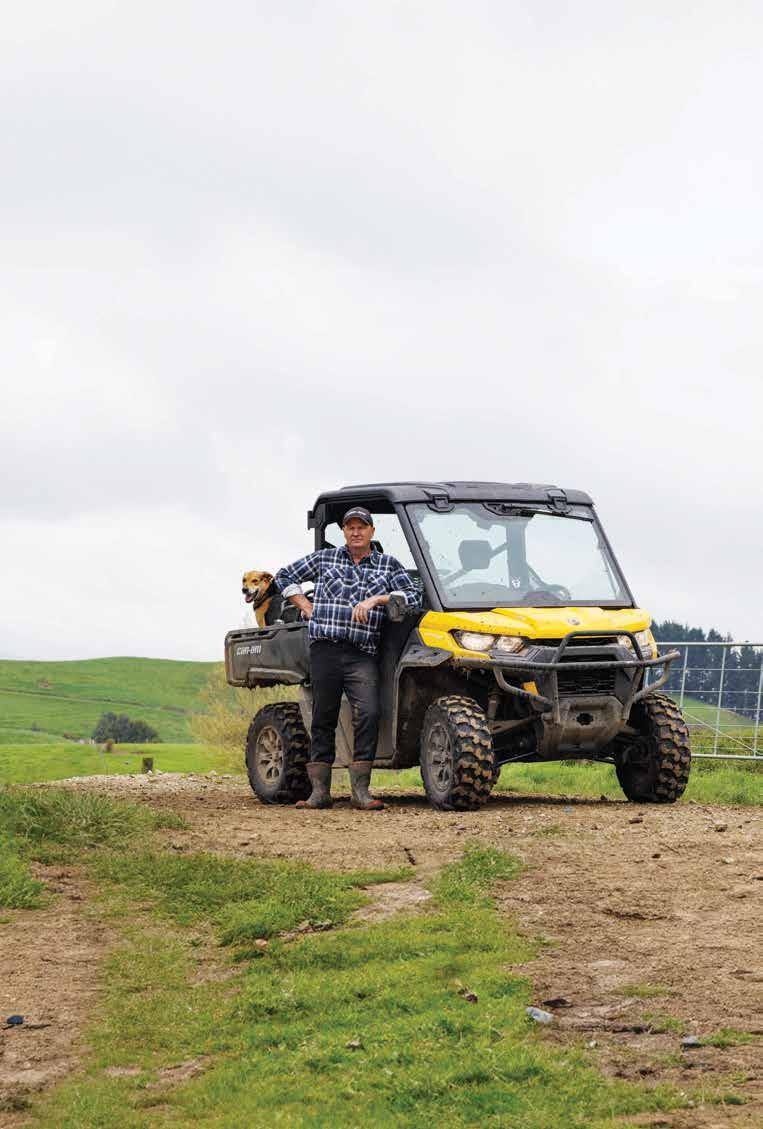
DAIRY NEWS APRIL 16, 2024 OPINION // 13
Feed low risk feeds such as maize silage prior to grazing a high nitrate crop.
Planting natives for the future
TE AWAMUTU dairy
farmers Doug, Penny, Josh and Bayley Storey have planted more than 25,000 native trees on the family farm, adding to a generations-old native forest.
The forest includes kahikatea, totara, rimu, pōkākā and mataī and was fenced off 30 years ago to protect it. Doug says the farm has been in the family for six generations, and his parents John and Susan are also involved in the farm’s environmental work.
“We embarked on the sustainability journey because we want to connect even closer to the land and enhance the natural beauty of the farm,” Doug says.
“We want to keep eeling in the river and for future generations to play in the forest like we did.”
With help from native
planting specialists Koroneiki Developments and volunteers, the Storeys have planted 2.5km alongside the section of the Mangapiko Stream running through their farm, and plan to plant another 1km. They planted around a wetland, which helps attract native birds and other wildlife.
The family have retired four hectares of land from farming to carry out more planting and have a pest management plan in place to help increase the bird population.
Doug is one of 400 environmentally focused farmers in the Dairy Environment Leaders network, created by farmers, DairyNZ and the NZ Farm Environment Trust in 2007. The network aims to empower leadership and create opportunities to support and share on-farm actions to reduce environmental footprint.

Doug’s son Josh and daughter-in-law Bayley help run the family farm and are passionate about sustainability and encouraging other young people into dairy farming.
“As farmers, we want to do our best to protect the land and enhance native wildlife, and love seeing tūī, kererū and other native birds on the farm,” Josh says.
The Storeys are involved in a Waipa district community project creating an ecological corridor linking two mountains – Mt Pirongia and Maungatautari.
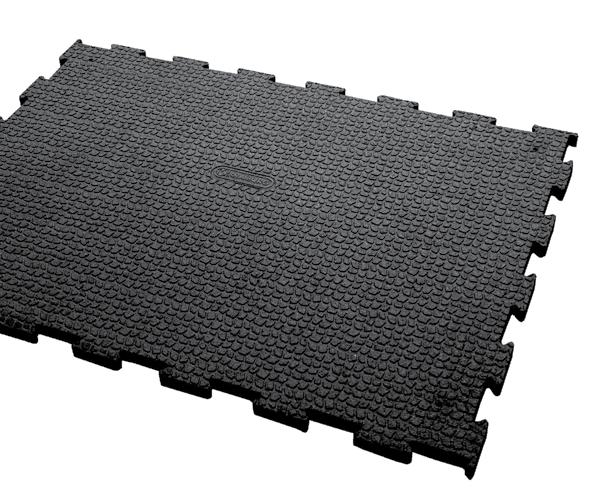
A key goal is to create great habitat for wildlife, including native birds and bats.
The Taiea te Taiao ecological corridor project sees farmers, iwi, community groups and
organisations including Nestle, Open Country Dairy, Fonterra and industry good organisation DairyNZ working together. The work includes a range of environmental work across farms and other properties.
The Storey farm is a stepping stone for birds and bats to rest and feed as they travel along the corridor. “It’s a fantastic project and we’re excited to be helping boost biodiversity,” Josh says.
On the family farm and throughout the corridor, bat monitoring is underway and tuna/freshwater eels are being monitored using matauranga Māori methods. On the Storey farm, ecologist Britta Deichmann, has catalogued all the native trees, which Josh says will be a great record for future generations.
DAIRY NEWS APRIL 16, 2024 14 // MANAGEMENT
GREEN. Made from 100% recycled rubber, our heavy-duty dairy mats are not just the most durable choice, but also the greenest. Hooves choose it.
Sustainability focus: Dairy farmers Josh, Bayley, Penny and Doug Storey are passionate about environmental initiatives on their farm and in their community.
This Dairy Mat is
Leaders connect to plan continued tree planting
LEADING FARMERS from around New Zealand connected to share environmental stories and inspiration and build relationships at the Dairy Environment Leaders (DEL) national forum in Wellington last month.
The March 12-14 forum gave the 70 attending farmers an opportunity to share and seek inspiration around how they will continue to drive environmental progress in their respective regions.
The forum, based on a ‘whanaungatanga for future success’ theme, sought to establish connection among attendees as they continue to reduce their environmental footprint and support their communities.
National DEL chair and Hunua dairy farmer
Amber Carpenter says feedback from those attending was positive, with farmers and speakers enjoying the chance to connect, share experiences and learn from each other.
“We look forward to building on the connections made and strengthened at the forum as the dairy sector continues to contribute positively to New Zealand’s environment and economy. These connections help the sector accelerate positive change.”
The programme included Mavis Mullins, a fifth-generation farmer, agribusiness leader and Member of the New Zealand Order of Merit, who shared te ao Māori insights into improving waterway health and working collaboratively to support water quality outcomes.

Taranaki dairy farmer Damian Roper spoke
AN ‘AMAIZING’ SEASON
PETER BURKE peterb@ruralnews.co.nz
IT’S BEEN a bumper season for maize and other supplements in the eastern Bay of Plenty.
Well-known dairy farmer and local body politician Doug Leeder says maize yields in the region are the best they have been for the last five or six years. In the past couple of years a series of rain events have seen significantly lower yields in both the maize and silage takes.
But Leeder says this year the maize yields have been in
the order of 25 to 30 tonnes per hectare which he adds is big.
“It seems the stars have all been aligned this year and when you are running a biological system, things like this can happen,” he says.
Leeder says while maize yields have been really good, yields of surplus grass have also been exceptionally good.
“We have got silage for Africa here in the Bay of Plenty, so much so that contractors have even been offered grass for free by farmers so that they can clean up their paddocks,” he says.
Leeder says it augers well
for the winter and spring but notes that seasons tend to equal themselves out and while there is a great surplus of conserved feed now, a harsh winter could change all that. He says with the tremendous grass growth, cows are heading into calving and mating in very good condition.
On his own farm where he runs about 500 cows, Leeder says the greatest challenge this season has been managing the very good grass growth. He says this makes for a potentially rewarding season and he’ll be a lot better off financially – especially if the payout is around the $8/kgMS mark.
about the positive relationships he and his
wife Jayne have with key stakeholders in their community, and how that supports their focus on reducing on-farm environmental footprint, building biodiversity and farming holistically – with people, animals and the environment at the centre of their business. He also shared how he and Jayne have built a traditional pā to help bring native trees and Māori values back to the family farm, and how he has embraced learning te reo.
Other speakers included former Opposition Leader Todd Muller, who highlighted the importance of connection in terms of prioritising his own mental health and wellbeing.
“The line-up of speakers was inspirational,”
Amber says. “The forum’s focus every year is on inspiring attendees to go back to their farms, communities and regions and continue to do great things. Their actions have positive impacts across the sector.”
DairyNZ general manager farm systems and policy Dr David Burger says the DEL network’s vision is of environmental stewardship for the future – farmer-led practical change across individual farms, catchments and regions.
“The DELs work hard to encourage the adoption of positive environmental practices. Thanks to their efforts, and those of other dairy farmers around NZ, the sector is embracing environmental change with a positive, future-focused approach.”
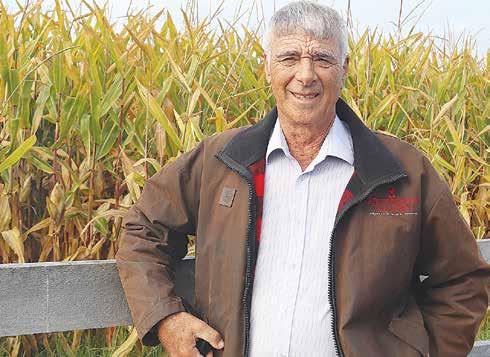


Knowledge is power
Every year thousands of cows get unnecessary dry cow therapy antibiotics. Not only is this costly for farmers, but it also takes us one step closer to increased antibiotic resistance.
DairySmarts’ innovative culture-based system ensures the proper identification of cows with bugs in their udders before dry-off, so you can optimise treatment and safeguard your future.
Get DairySmart today.
Talk to us about the latest award-winning way to dry off.
DAIRY NEWS APRIL 16, 2024 MANAGEMENT // 15
National DEL chair and Hunua dairy farmer Amber Carpenter says feedback from those attending was positive.
Bay of Plenty dairy farmer Doug Leeder says maize yields in the region are the best seen in five years.
0800 SAMPLE // dairysmart.co.nz
Two hemispheres tied together through cows
ONE OF New Zealand’s deepest breeder Jersey herds – known for its enduring connection through cattle with the UK’s longest reigning monarch, Queen Elizabeth II – will host its 75th anniversary celebration sale on-farm on April 22.
Warren and Michelle Ferguson milk 220 cows at Ferdon Genetics on 92ha at Otorohanga, in the heart of the Waikato. This is the home of the reigning Senior and Grand Champion Jersey – in addition to the Intermediate Champion Jersey (who sells as Lot 5) –from January’s New Zea-
land Dairy Event (NZDE) in January 2024. Ferdon has focused on deep maternal lines throughout its tenure and has been unafraid to test those genetics in the show ring and in on-farm competitions. It won nine successive Premier Jersey Exhibitor banners at the NZDE and is consistently pushing its peers with cows producing up to 700 kgMS.
Ferdon first drew the eye of Queen Elizabeth II in 1975 when Warren’s father, Don, told the Queen’s herdsman at the (now defunct) English Royal Show at Stoneleigh Park near Kenilworth, that he wasn’t that impressed with Her Maj-
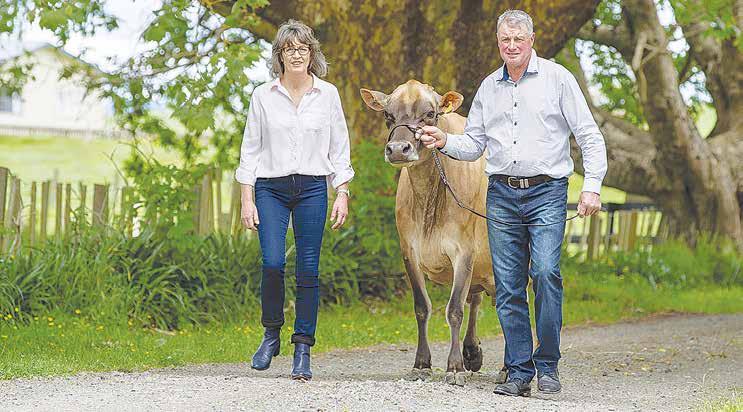

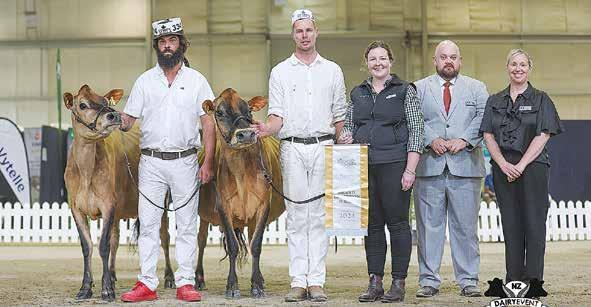
esty’s show team. Not long after, Ferdon was selling bulls and heifers to the Queen.
Don first met Her Majesty in 1977 in New Zealand. In 1990 she asked to visit Ferdon Farms while she was in New Zealand for the Commonwealth Games. Don also worked as the Queen’s herdsman briefly for four months.
During his career, he visited the Queen’s herd 11 times, and spoke to her once a month.
Warren and Michelle say they felt it was time to draw together an offering to mark the family’s 75th anniversary on-farm on April 22. It will include 75 elite lots, comprised of 55 Jerseys, 16 Holsteins, and four Ayrshires. The Ferdon herd will also be on display.
“What better way to
celebrate in our industry than by bringing together the very things that make it all worthwhile – the cows and the people,” Warren says.
“Cows have been our life; they have taken us around the world, we’ve met so many wonderful people and made lifelong friends through our intense love of registered animals.”
Ferdon may have been among the pioneers to manage animals for a partner who lives in another part of the world. Warren says if international buyers are interested in buying at this sale, they should make contact because they would be open to continuing to manage animals on-farm for a partnership.
Warren acknowledges
that herds which include show cows are often misunderstood by their commercial peers. He believes it’s an industry divide which doesn’t need to exist.
“People often think all we’re doing is trying to breed a show cow,” Warren said.
“That’s not true. As I say to anyone who asks, we’re trying to breed a functional cow the best we can get her, and if we get to show her that’s the icing on the cake. But, to be honest, a show cow and a profitable herd cow should be one and the same.
“It’s four kilometres from our front gate to the river flats at the back of our farm. So, our cows must do a fair bit of walking and they have to be functionally correct to do
that. If they have good legs, and if their udders are correct and wellattached, they will last.” Ferdon’s catalogue will also include some Holstein and Ayrshire offerings from Ferdon, in addition to some offerings from good friends Waipiri Holsteins –who own the reigning Supreme Senior and Intermediate Champion from January’s NZDE –Okawa Holsteins, Jerome and Holly Ferguson, and Andrew Ferguson.
“Even though we’re Jersey people, we have always appreciated a good cow in any breed and we do also milk a few select Holsteins and Ayrshires. For us, when you buy into a good cow family those maternal traits come through generation after generation,” Warren says.
DAIRY NEWS APRIL 16, 2024 16 // ANIMAL HEALTH
DIANNA MALCOLM
Ferdon’s double whammy at the New Zealand Dairy Event in January 2024 included winning the Jersey Senior Champion and Grand Champion Jersey (right) with Ferdon Tbone Veneer.
Freephone 0800 833 463 Email info@veehof.co.nz www.veehof.co.nz “ Supporting farmers to become the best they can be ” Standard Crush from $7,238 +gst * Picture shows standard crush with some of the optional extras. Hoof Trimming Crush The crush your cows prefer • Your team will be happier using the WOPA crush and take action to treat cows sooner. • Cows are happier, antibiotic use is reduced, and you see the vet less often. • Faster recovery from lameness can save thousands in lost revenue. Faster and easier to use – helps your cows back to full milk production sooner. VISIT US: MYSTERYCREEK SITEFIELDAYS # i29 To find out more, call us today! Freephone 0800 833 463 BUY YOUR CRUSH IN JUNE AND RECEIVE A VALUED AT $385 FREE VGRIP MAT FIELDAYS SPECIAL
Warren and Michelle Ferguson milk 220 cows at Ferdon Genetics on 92ha at Otorohanga.
Better hoof health, better cows
THE FLEDGLING New Zealand hoof trimming industry has about between 25 to 30 active professional hoof trimmers.
Initially, preventative hoof trimming was viewed as a common and necessary practice in Europe and America, but it faced reluctance in New Zealand, according to the newly launched New Zealand Cattle Hoof Trimmers Association.
However, a growing number of farmers now recognise the benefits of this preventive approach, understanding that maintaining optimal hoof health is essential for the overall well-being and productivity of their cows.
In New Zealand, where pasture-based farms are prevalent, the importance of preventing lameness through proper hoof trimming cannot be overstated, the association says.
“The well-being of cows is directly linked to their ability to walk comfortably, impacting their productivity.
“While hoof trimming is a specialised job that takes extensive training, its significance is often underestimated. It is crucial to dispel the misconception that effective hoof trimming is solely determined by improvements in a cow’s locomotion.
“In reality, hoof trimmers play a vital role in accelerating the healing process, acknowledging that they cannot ‘fix’ cows but facilitate their selfhealing.
“Poor hoof trimming however, can slow down the healing process and in the worst-case scenario, cause permanent damage to the cow.”
Drawing inspiration from European practices, where farmers are obligated to have their
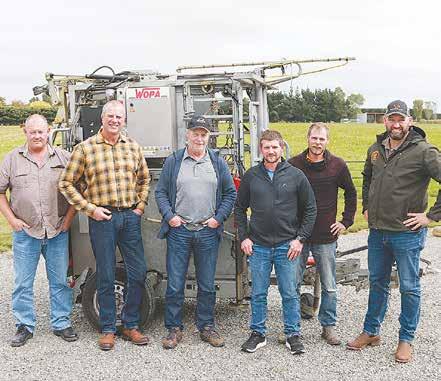
cows trimmed twice a year by qualified professionals to obtain a milk premium, New Zealand aims to elevate its standards in hoof health for the sustainability of the dairy industry.
Lameness holds a
prominent position among the top three animal health issues in farming, alongside mastitis and infertility. It is the only health issue out of those three that is visible to the public from the roadside and this visibility underscores the
urgency for quality hoof trimming by certified professionals in New Zealand.
However, the ease with which individuals can start hoof trimming businesses in New Zealand is a potential problem as the number
of hoof trimmers grow. Some so-called “professional” hoof trimmers rely solely on their farming experience, potentially causing harm to cows, farmers, the hoof trimming industry, and the dairy sector.
Recognising this challenge, a proactive group of six hoof trimmers throughout New Zealand has established the New Zealand Cattle Hoof Trimmers Association. This association is poised to set a high standard for the industry and encourages members to obtain recognised qualifications and undergo re-evaluation every two years to maintain their membership. The association emphasises the importance of competency, wellmaintained equipment, the ability to provide sound advice to farmers, and staying in touch with
the latest developments in hoof care.
The association will also focus on creating a platform for hoof trimmers, industry professionals and other stakeholders to collaborate and share ideas regarding lameness issues.
The launch of the association marks a significant step toward ensuring the highest standards in hoof trimming in New Zealand. By establishing clear criteria and expectations for its members, the association aims to safeguard the well-being of cows, promote the sustainability of the dairy industry, and elevate the professionalism of hoof trimmers across the nation.
• To get in contact with the NZCHTA, visit www. nzchta.co.nz
@dairy_news
facebook.com/dairynews
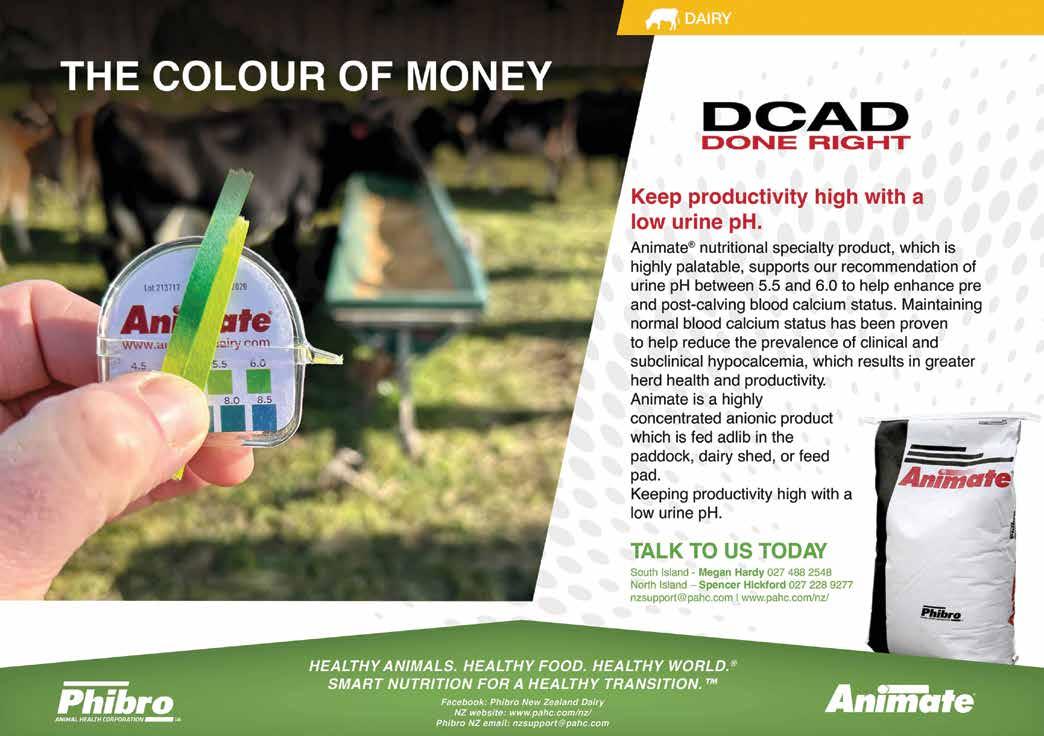
DAIRY NEWS APRIL 16, 2024 ANIMAL HEALTH // 17
New Zealand Cattle Hoof trimmers Association founding members, from left: Hardy Froneman, Fred Hoekstra, Sietze Feenstra, Nathan Seed, Arno Luten and Johan Buys.
Machinery builder in liquidation
IN WHAT appears to be a casualty of the downturn in the agricultural sector, a well-known machinery brand is now in the hands of liquidators and owing creditors $6.6 million.
Liquidators Ecovis KGA are now considering selling Reese Engineering, the company behind the Aitchison brand known for seeders, rollers, spreaders and bale feeders and well-known UFO mowers, manufactured at facilities in the Manawatu region, for supply to the home and export markets.
The brand was estab-
lished more than 50 years ago by former NZ rower Peter Aitchison, but more recently has been owned by Ross and Anne Simpson’s Simpro Holdings.
The liquidators first report suggests that the business’ collapse had been caused by the downturn in the sector, both in NZ and Australia, with a “stagnating” sales and order pipeline leading to oversupply of inventory in the market. They also note that losses had occurred after a “significant” customer order was cancelled at the end of 2023.
After the liquidators were appointed, Reese Engineering ceased trading and terminated

staff, leading to the primary objective of trying to achieve a sale for the business, which if not
possible, would unfortunately lead to a disposal auction of the company’s assets.
Total liabilities were estimated at around $6.6m, of which $3.1m was owed to CMI Ltd –
an entity also owned by Simpro Holdings. Meanwhile, Westpac was owed $2.3m, trade creditors
are owed $587,000 and $174,000 was owed in employee wages and holiday pay. The company is said to be owed $428,000 from customers, with related parties also owing a further $1.1m.
Total assets are said to be to $4.1m, although at this stage the liquidators have withheld the value of the fixed assets and intellectual property. While the machine inventory carried a book value of $2.5m, the report noted it included slowmoving and obsolete stock, with the realisable value likely to be substantially lower than book value.
WHILE THE average size of a tractor in India is much smaller than in Europe or North America, the market is booming, with a record 915,474 tractors sold last year – five times greater than the Western European and three times larger than North American markets. In numerical terms, India accounted for around 36% of the estimated 2.5 million tractors sold worldwide last year.
Indeed, the 2023 figures were not only higher than the 900,000 tractors sold in 2021 and 2022, but a huge increase on the 700,000 units five years ago.
Building more than 150,000 tractors at its factories every year, Mahindra is the market leader, followed by another big player called Tafe and numerous other brands including Escorts, Farmer, and Sonalika. The Indian tractor market is also supplied by companies BCS, Argo with its McCormick and Landini brands, John Deere, New Holland, and SDF.
With an agricultural area of over 200 million hectares (140 million hectares cultivated and more than half irrigated), compared to New Zealand that has 13.8 million hectares (53.4% of total area) under agricultural use, the value of the Indian tractor and equipment market is expected to exceed €15 billion by 2025, rising from €11 billion in 2020.
– Mark Daniel

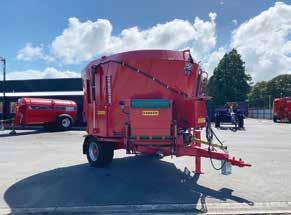


DAIRY NEWS APRIL 16, 2024 18 // MACHINERY & PRODUCTS
MARK DANIEL markd@ruralnews.co.nz
@dairy_news facebook.com/dairynews 900,000 TRACTORS SOLD IN INDIA! Reese Engineering is the company behind the Aitchison brand known for seeders, rollers and spreaders. India accounted for around 36% of the estimated 2.5 million tractors sold worldwide last year. Are you hitting your target market? Get in touch with your local sales contacts for more information www.dairynews.co.nz ■ BREAKING NEWS ■ MACHINERY REVIEWS ■ MANAGEMENT STORIES ■ AND MUCH MORE... Auckland Stephen Pollard Ph 021-963 166 Waikato & Wellington Lisa Wise Ph 027-369 9218 Christchurch Kaye Sutherland Ph 021-221 1994 Mixer Wagons 14m3 - starting from $69.500+GST Slurry Tankers - starting from $35.900+GST* High quality innovative and reliable machinery - robust and easy to maintain. Contact Eric Crosby 027 838 7990 CAMBRIDGE | ŌTOROHANGA | ROTORUA | TAUPŌ MIXER WAGONS SLURRY TANKERS www.gaz.co.nz * Terms & conditions apply. * Terms & conditions apply.
Temporary slurry tanks –cheap, easy to install
WITH EFFLUENT management never far from the thoughts of legislators and farmers becoming increasingly aware of the nutrient values of dairy effluent, innovate ideas for the convenient storage and subsequent discharge are always of interest.
UK effluent specialists
Tramspread, based in the south-east of England, has recently introduced a new range of temporary slurry tanks, claimed to be quick to install, in 280, 500,800, 1100 and 1250 cubic metre capacities.
Made in the UK by
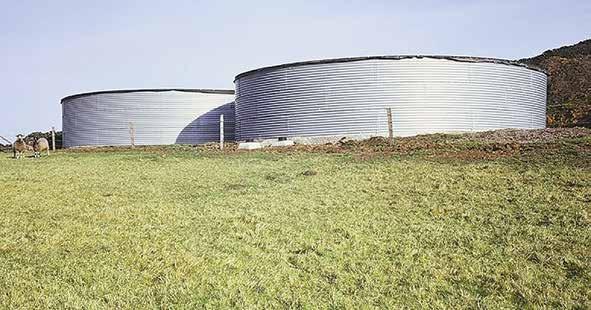
Butyl Products, the metallic zinc-coated steel is said to last three times as long as standard galvanised steel, is powder
coated for a maintenancefree finish and available in any RAL colour. All tanks come with a 10-year warranty (coastal
area exclusions apply).
As standard, tanks are equipped with a single 6” through-the-wall filling/ emptying port, but may
Moving Day is a huge day in the farming calendar. The farmers’ checklist will be extensive and include everything from stock transport regulations, to hooking up the power and internet, and more in between. Our special report will cover all aspects that farmers need to ensure their move goes smoothly. If your product or service is on that list, contact us now to advertise.
be specified with multiple ports as required, including 5” up and over the wall layout. Multiple ports allow an umbilical
slurry application system to operate, simultaneously drawing-out slurry whilst recirculating back into the tank.
Installation is said to be straightforward, without the need for a concrete base. Instead, the tank uses a compacted earth base covered with a Geotech membrane. A base ring of concrete slabs is supplied as part of the package along with drawings and installation advice.
The tanks can be covered with either a floating Hexa-Cover or a fixed cover, while slurry or digestate can be mixed using a hydraulically driven mixer positioned over the side or agitated
using a pump.
A Tramspread spokesman suggests that the flexible tanks lend themselves to several possible scenarios, including being popular as satellite or supplementary stores suitable for existing systems, or perhaps installed to service an outlying block of land or rented ground.
This removes the commitment and substantial investment of a permanent store that might not be appropriate. With no fixed foundations needed the tank can be situated virtually anywhere and uplifted to a new location later.

DAIRY NEWS APRIL 16, 2024 MACHINERY & PRODUCTS // 19
MARK DANIEL markd@ruralnews.co.nz @dairy_news facebook.com/dairynews
concrete base.
to
NZ dairy
SPECIAL REPORTS FEATURE: 14 May 2024 BOOKING DEADLINE: 1 May 2024 MATERIAL REQUIRED: 7 May 2024 Be in touch with your closest Sales Contact MOVING DAY Auckland Stephen Pollard Ph 021-963 166 Waikato & Wellington Lisa Wise .................. Ph 027-369 9218 Christchurch Kaye Sutherland Ph 021-221 1994
Installation of the slurry tanks is said to be straightforward, without the need for a
To be in this special report contact your advertising representative now
promote your products and/or service to all
farmers and sharemilkers.
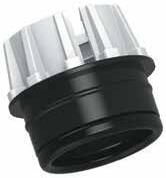


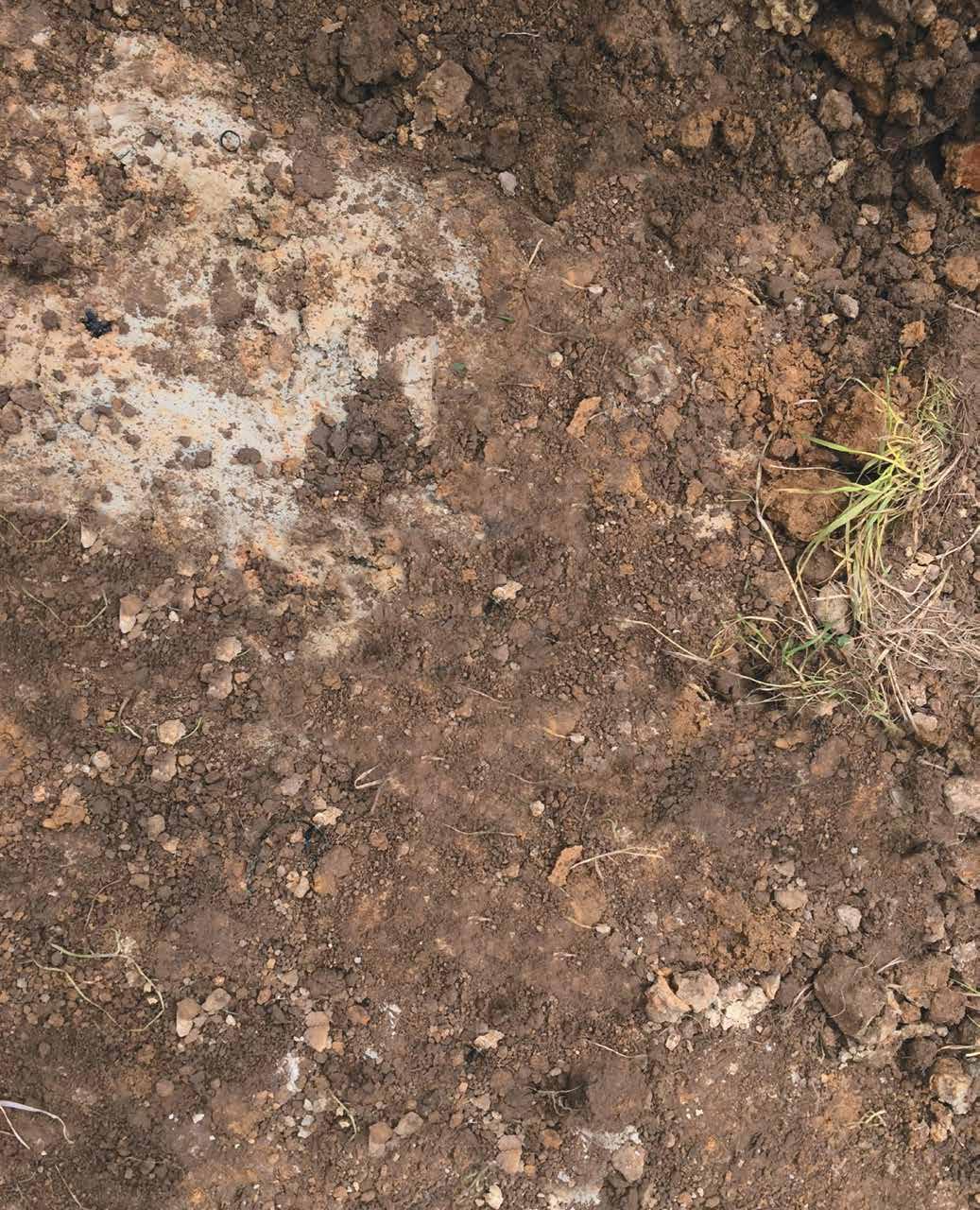


Hansen Products NEW Easy Fit Compression Fittings can now be used on Medium Density Pipe, Low Density Pipe, and High Density Pipe. Available at your Local Stockist NEW Poly Pipe Fittings LD MD HD Fits 15 – 50mm High Density Pipe Fits 15 – 40mm Low Density Pipe Fits 16 – 110mm Medium Density Pipe www.hansenproducts.co.nz

















































































